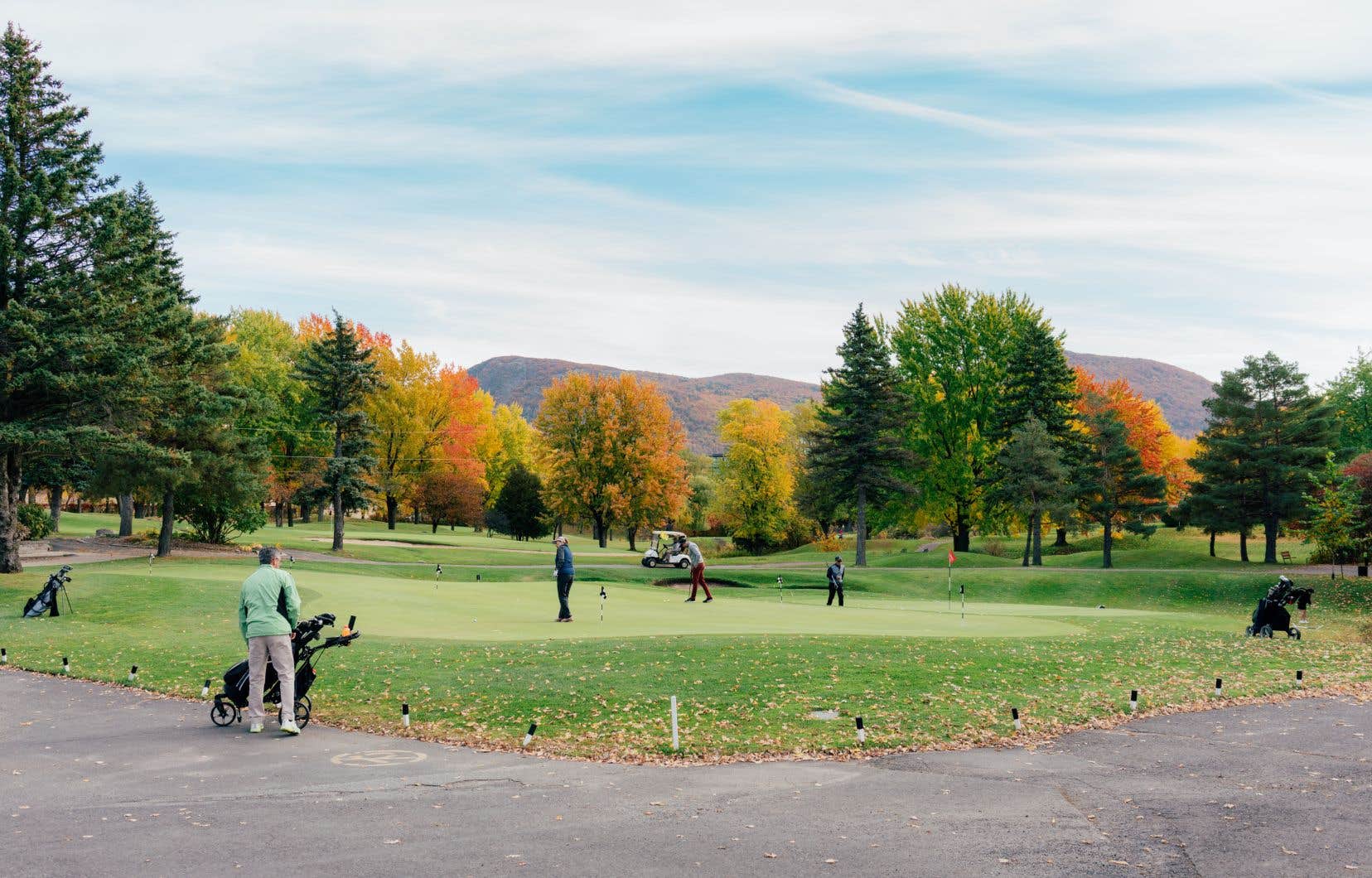The Metropolitan Community of Montreal (CMM) has relaxed its Interim Control Regulation (RCI) adopted in 2022 to authorize real estate development on 30% of the surface area of golf courses on its territory.
This decision follows a judgment of the Superior Court in a case of the Châteauguay-Léry forest corridor as well as an agreement reached between the municipality of Chambly and the owner of the municipal golf course. The CMM, which brings together 82 municipalities in the metropolitan region, wanted to adapt its regulations in order to better protect itself against challenges before the courts.
At a press conference on Tuesday, Mayor Valérie Plante clarified, however, that municipalities could choose to protect or purchase the golf courses in full. Otherwise, they could allow the construction of housing, schools, green spaces or other uses on the 30% portion. “This will allow us to protect at least 460 hectares of green spaces in Greater Montreal, and that is a necessity when we know the pressure that cities and municipalities face in terms of territorial protection. »
Lawsuits totaling 508 million
In June 2022, the CMM adopted an RCI which froze all development activity on six golf courses in its territory. These were the Beloeil Golf Club, the Candiac Golf Club, the Chambly Municipal Golf, the Mascouche Golf Club, the old Rosemère golf course and the Le Boisé golf club in Terrebonne, for a total of of 284 hectares. This settlement, however, resulted in CMM being sued for a total of $508 million in recent years.
Since then, the Superior Court has ruled on the Châteauguay-Léry forest corridor case. In November 2023, it rejected the claims of five owners of land located in the municipality of Léry who asserted that municipal regulations protecting certain parts of their land constituted a “disguised expropriation”. According to lawyer Marc-André LeChasseur, who represents the CMM, this judgment confirmed the CMM’s approach according to which allowing development on 30% of the land area “was entirely reasonable and that in this case , there is no need for prosecution and compensation. » The Châteauguay-Léry forest corridor case was, however, appealed, added the lawyer.
The new RCI will now apply to ten golf courses, with the addition of two golf courses in Saint-Lambert which will be 100% protected. The Chambly municipal golf course was, however, removed from the by-law given the agreement concluded with the owner which will allow the City of Chambly to acquire 70% of the land area.
The fact remains that buying land to protect it is expensive for cities. This is why the CMM continues to demand $100 million in aid from the Quebec government to help municipalities acquire sectors protected by the RCI.
Disappointment
The CMM’s decision to allow real estate development on 30% of the golf course area disappoints Catherine Vallée, spokesperson for the Coalition Golf Courses in Transition (CTGT), who sees it as a clear step backwards for the protection of natural environments. “The enormous sums requested by the owners who are suing [la CMM] for disguised expropriation are likely to intimidate the CMM which prefers to step back and place itself in a more comfortable position, therefore less risky, based on case law, in particular that of the Châteauguay-Léry corridor,” she explains.
Ms. Vallée would have liked the CMM to rely instead on a new article of Bill 39 adopted last December by the National Assembly. Article 245, which was integrated into the Law on Land Use and Urban Planning (LAU), governs proceedings for disguised expropriation and specifies that an infringement of property rights is justified when zoning applies to wetlands and bodies of water as well as environments with “significant ecological value”. According to Catherine Vallée, the lack of clarity of this definition makes the CMM hesitate, which prefers to take a more cautious position and allow development on 30% of the golf course areas. She believes that the notion of “ecological restoration” potential should be included in this definition.
